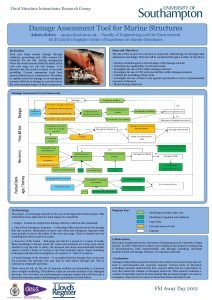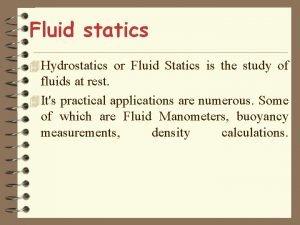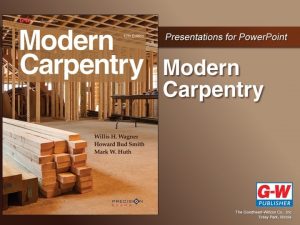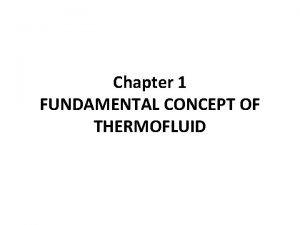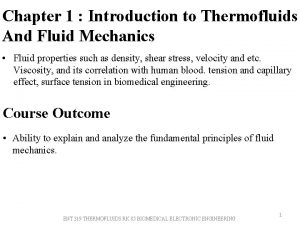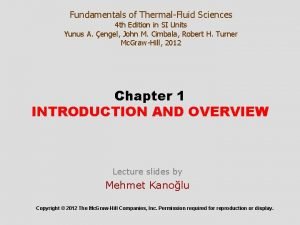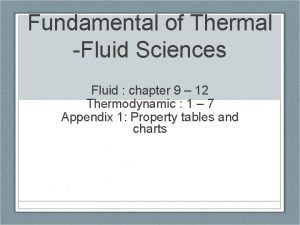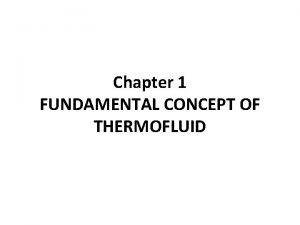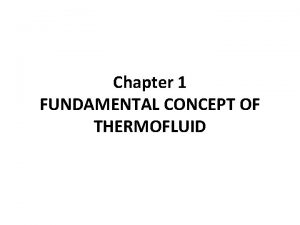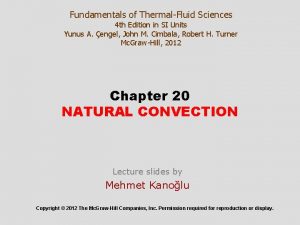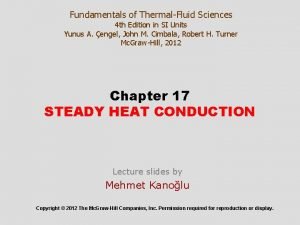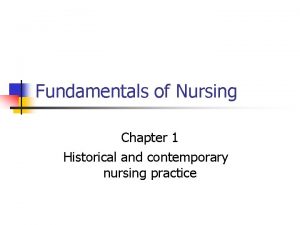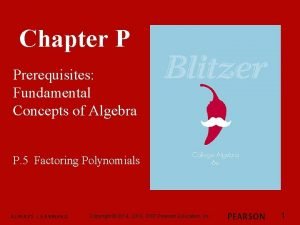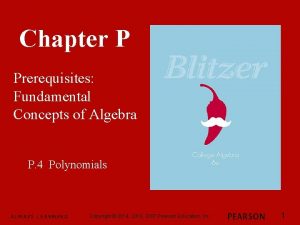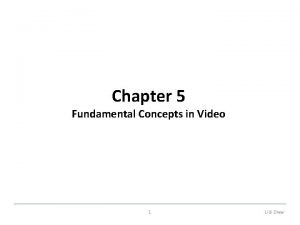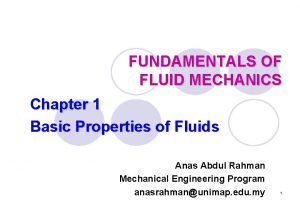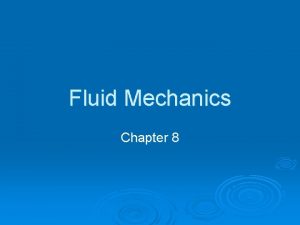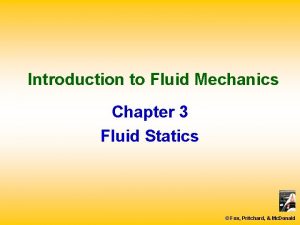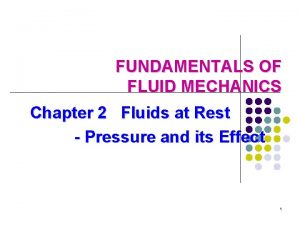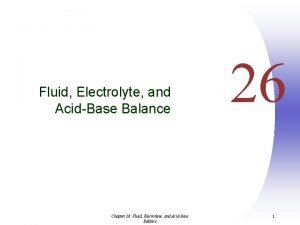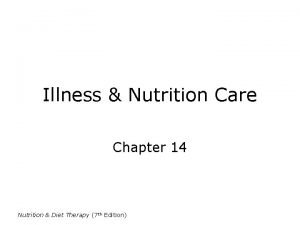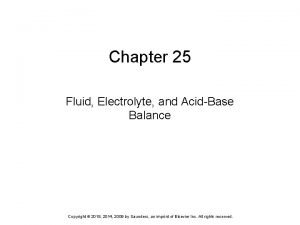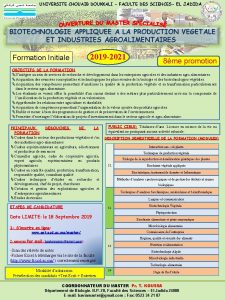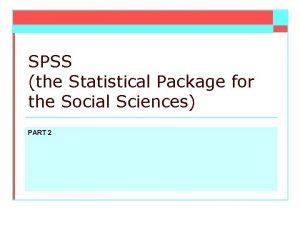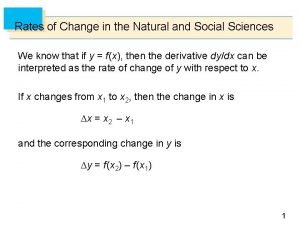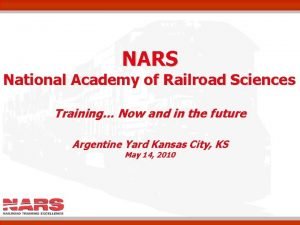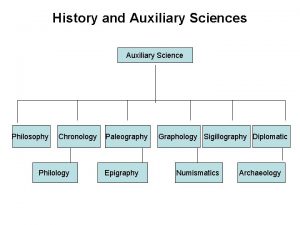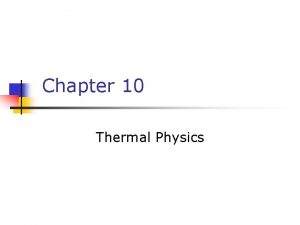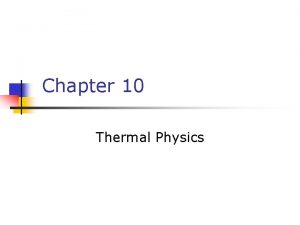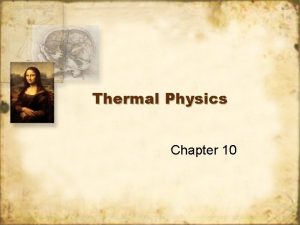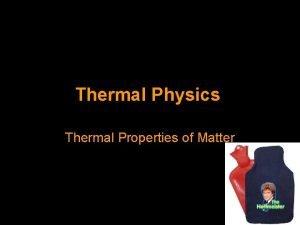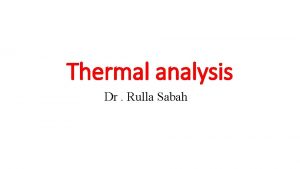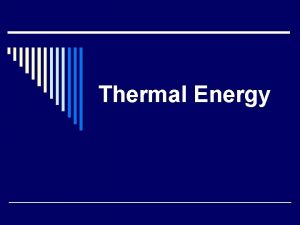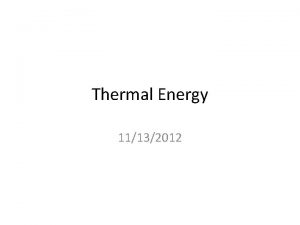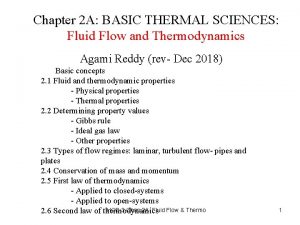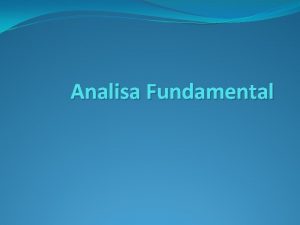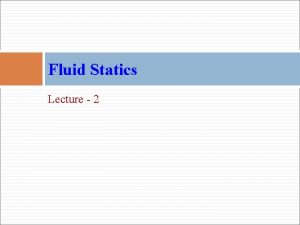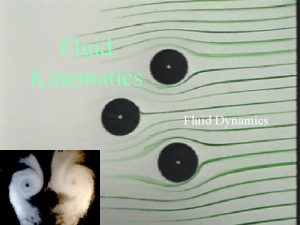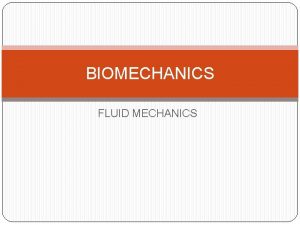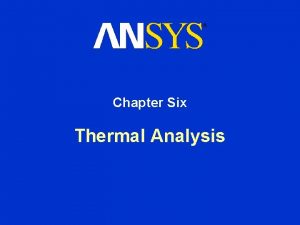Fundamental of Thermal Fluid Sciences Fluid chapter 9












































































- Slides: 76

Fundamental of Thermal -Fluid Sciences Fluid : chapter 9 – 12 Thermodynamic : 1 – 7 Appendix 1: Property tables and charts

Tensile Strength • Tensile strength measures the force required to pull something such as rope, wire, or a structural beam to the point where it breaks. • The tensile strength of a material is the maximum amount of tensile stress that it can be subjected to before failure. • The definition of failure can vary according to material type and design methodology. • This is an important concept in engineering, especially in the fields of material science, mechanical engineering and structural engineering

There are three typical definitions of tensile strength: • Yield strength - The stress a material can withstand without permanent deformation. This is not a sharply defined point. Yield strength is the stress which will cause a permanent deformation of 0. 2% of the original dimension. • Ultimate strength - The maximum stress a material can withstand. • Breaking strength - The stress coordinate on the stress-strain curve at the point of rupture.

1. Stress CHAPTER OBJECTIVES • Review important principles of statics • Use the principles to determine internal resultant loadings in a body • Introduce concepts of normal and shear stress • Discuss applications of analysis and design of members subjected to an axial load or direct shear 4

1. Stress CHAPTER OUTLINE 1. 2. 3. 4. 5. 6. 7. Introduction Equilibrium of a deformable body Stress Average normal stress in an axially loaded bar Average shear stress Allowable stress Design of simple connections 5

1. Stress 1. 1 INTRODUCTION A branch of mechanics • It studies the relationship of – External loads applied to a deformable body, and – The intensity of internal forces acting within the body • Deals with the behavior of solid bodies subjected to various types of loading • Study body’s stability when external forces are applied to it. • A thorough understanding of mechanical behavior is essential for the safe design of all structures. 6

3. Mechanical Properties of Materials PROBLEMS • WILEY • 6. 3, 6. 4, 6. 8, 6. 15, 6. 22, 6. 23 • • Pearson 1. 2, 1. 37, 1. 81, 1. 88 3. 5, 3. 6, 3. 14, 3. 26, 3. 32 5. 5, 5. 8, 5. 12 7

1. Stress 8

1. Stress 1. 2 EQUILIBRIUM OF A DEFORMABLE BODY External loads • A body can be subjected to different types of external load; surface force, body force. • Surface forces – caused by the direct contact of one body with the surface of another. – Linear distributed force (forces distributed over the a. o. c) – Concentrated force (a. o. c smaller than total surface area) 9

1. Stress 1. 2 EQUILIBRIUM OF A DEFORMABLE BODY External loads – FR of w(s) = area under distributed loading curve, acts through centroid C. – Centroid C (or geometric center) • Body force (e. g. , weight) – one body exerts a force on another without direct physical contact eg effect of earth’s gravitation. 10

1. Stress 1. 2 EQUILIBRIUM OF A DEFORMABLE BODY Support reactions • The surface forces that develop at the supports or points of contact between bodies 11

1. Stress 1. 2 EQUILIBRIUM OF A DEFORMABLE BODY Equations of equilibrium • For equilibrium – balance of forces – balance of moments • Draw a free-body diagram to account for all forces acting on the body • Apply the two equations to achieve equilibrium state ∑F=0 ∑ MO = 0 12

1. Stress 1. 2 EQUILIBRIUM OF A DEFORMABLE BODY Internal resultant loadings • Define resultant force (FR) and moment (MRo) acting within the body (3 D): – Normal force, N(acts perpendicular to area) – Shear force, V(lies in the plane of area) 13

1. Stress 1. 2 EQUILIBRIUM OF A DEFORMABLE BODY Internal resultant loadings – Torsional moment or torque, T(develop when external loads tend to twist 1 segment of the body with respect to another) – Bending moment, M (cause by external loads that tend to bend the body) 14

1. Stress 1. 2 EQUILIBRIUM OF A DEFORMABLE BODY Internal resultant loadings • For coplanar loadings: – Normal force, N – Shear force, V – Bending moment, M 15

1. Stress 1. 2 EQUILIBRIUM OF A DEFORMABLE BODY Internal resultant loadings • For coplanar loadings: – Apply ∑ Fx = 0 to solve for N – Apply ∑ Fy = 0 to solve for V – Apply ∑ MO = 0 to solve for M 16

1. Stress 1. 2 EQUILIBRIUM OF A DEFORMABLE BODY Procedure for Analysis • Method of sections 1. Choose segment to analyze 2. Determine Support Reactions 3. Draw free-body diagram for whole body 4. Apply equations of equilibrium 17

1. Stress 1. 2 EQUILIBRIUM OF A DEFORMABLE BODY Procedure for analysis • Free-body diagram 1. Keep all external loadings in exact locations before “sectioning” 2. Indicate unknown resultants, N, V, M, and T at the section, normally at centroid C of sectioned area 3. Coplanar system of forces only include N, V, and M 4. Establish x, y, z coordinate axes with origin at centroid 18

1. Stress 1. 2 EQUILIBRIUM OF A DEFORMABLE BODY Procedure for analysis • Equations of equilibrium 1. Sum moments at section, about each coordinate axes where resultants act 2. This will eliminate unknown forces N and V, with direct solution for M (and T) 3. Resultant force with negative value implies that assumed direction is opposite to that shown on free-body diagram 19

1. Stress Review of Statics • The structure is designed to support a 30 k. N load • The structure consists of a beam and rod joined by pins (zero moment connections) at the junctions and supports • Perform a static analysis to determine the internal force in each structural member and the reaction forces at the supports 20

1. Stress Structure Free-Body Diagram • Structure is detached from supports and the loads and reaction forces are indicated • Conditions for static equilibrium: • Ay and Cy can not be determined from these equations 21

1. Stress Component Free-Body Diagram • In addition to the complete structure, each component must satisfy the conditions for static equilibrium • Consider a free-body diagram of the boom; substitute into the structure equilibrium equation • Results: Reaction forces are directed along boom and rod 22

1. Stress Method of Joints • The boom and rod are 2 -force members, i. e. , the members are subjected to only two forces which are applied at member ends • For equilibrium, the forces must be parallel to an axis between the force application points, equal in magnitude, and in opposite directions • Joints must satisfy the conditions for static equilibrium which may be expressed in the form of a force triangle: 23

1. Stress Analysis Can the structure safely support the 30 k. N load? • From a statics analysis FAB = 40 k. N (compression) FBC = 50 k. N (tension) • At any section through member BC, the internal force is 50 k. N with a force intensity or stress of d. BC = 20 mm • From the material properties for steel, the allowable stress is • Conclusion: the strength of member BC is adequate 24

1. Stress 1. 3 STRESS Concept of stress • To obtain distribution of force acting over a sectioned area • Assumptions of material: 1. It is continuous (uniform distribution of matter) 2. It is cohesive (all portions are connected together) 25

1. Stress 1. 3 STRESS Concept of stress • • • Consider the sectioned area, subdivided into small areas; ΔA in figure below Small finite force, ΔF acts on ΔA, replaced by 3 components ΔFx, ΔFy, ΔFz. ΔA→ 0, The components → 0. The quotient of the force & area (called stress), describes the intensity of the internal force on a specific plane. 26

1. Stress 1. 3 STRESS Normal stress • Intensity of force, or force per unit area • Symbol used for normal stress, is σ (sigma) σz = lim ΔFz ΔA → 0 ΔA • Tensile stress: normal force “pulls” or “stretches” the area element ΔA • Compressive stress: normal force “pushes” or “compresses” area element ΔA 27

1. Stress 1. 3 STRESS Shear stress • Intensity of force, or force per unit area • Symbol used for shear stress is τ (tau) τzx = τzy = lim ΔFx ΔA → 0 ΔA lim ΔFy ΔA → 0 ΔA 28

1. Stress 29

1. Stress 30

1. Stress 1. 4 AVERAGE NORMAL STRESS IN AXIALLY LOADED BAR Examples of axially loaded bar • Usually long and slender structural members • Truss members, hangers, bolts • Prismatic means all the cross sections are the same 31

1. Stress 1. 4 AVERAGE NORMAL STRESS IN AXIALLY LOADED BAR Assumptions 1. Uniform deformation: Bar remains straight before and after load is applied, and cross section remains flat or plane during deformation 2. In order for uniform deformation, force P be applied along centroidal axis of cross section 32

1. Stress 1. 4 AVERAGE NORMAL STRESS IN AXIALLY LOADED BAR Average normal stress distribution + FRz = ∑ Fxz ∫ d. F = ∫A σ d. A P = σA σ= P A σ = average normal stress at any point on cross sectional area P = internal resultant normal force A = x-sectional area of the bar 33

1. Stress 1. 4 AVERAGE NORMAL STRESS IN AXIALLY LOADED BAR Equilibrium • • • Consider vertical equilibrium of the element When the bar is stretched by the force P, the resulting stresses are tensile stresses If the force P cause the bar to be compressed, we obtain compressive stresses 34

1. Stress 1. 4 AVERAGE NORMAL STRESS IN AXIALLY LOADED BAR • Sign convention for normal stresses is: • (+) for tensile stresses and • (-) for compressive stresses • Because the normal stress σ is obtained by dividing the axial force by the cross–sectional area, it has units of force per unit of area. • In SI units: • Force is expressed in newtons (N) and area in square meters (m 2). A N/m 2 is a pascals (Pa). 35

1. Stress 1. 4 AVERAGE NORMAL STRESS IN AXIALLY LOADED BAR Maximum average normal stress • For problems where internal force P and xsectional A were constant along the longitudinal axis of the bar, normal stress σ = P/A is also constant • If the bar is subjected to several external loads along its axis, change in x-sectional area may occur • Thus, it is important to find the maximum average normal stress • To determine that, we need to find the location where ratio P/A is a maximum 36

1. Stress 1. 4 AVERAGE NORMAL STRESS IN AXIALLY LOADED BAR Maximum average normal stress • Draw an axial or normal force diagram (plot of P vs. its position x along bar’s length) • Sign convention: – P is positive (+) if it causes tension in the member – P is negative (−) if it causes compression • Identify the maximum average normal stress from the plot 37

1. Stress 1. 4 AVERAGE NORMAL STRESS IN AXIALLY LOADED BAR Procedure for Analysis Average normal stress • Use equation of σ = P/A for x-sectional area of a member when section subjected to internal resultant force P 38

1. Stress 1. 4 AVERAGE NORMAL STRESS IN AXIALLY LOADED BAR Procedure for Analysis Axially loaded members • Internal Loading: • Section member perpendicular to its longitudinal axis at pt where normal stress is to be determined • Draw free-body diagram • Use equation of force equilibrium to obtain internal axial force P at the section 39

1. Stress 1. 4 AVERAGE NORMAL STRESS IN AXIALLY LOADED BAR Procedure for Analysis Axially loaded members • Average Normal Stress: • Determine member’s x-sectional area at the section • Compute average normal stress σ = P/A 40

1. Stress EXAMPLE 1. 6 Bar width = 35 mm, thickness = 10 mm Determine max. average normal stress in bar when subjected to loading shown. 41

1. Stress EXAMPLE 1. 6 (SOLN) Internal loading Normal force diagram By inspection, largest loading area is BC, where PBC = 30 k. N 42

1. Stress EXAMPLE 1. 6 (SOLN) Average normal stress σBC = PBC 30(103) N = 85. 7 MPa = (0. 035 m)(0. 010 m) A 43

1. Stress 1. 5 AVERAGE SHEAR STRESS • • Shear stress is the stress component that act in the plane of the sectioned area. Consider a force F acting to the bar For rigid supports, and F is large enough, bar will deform and fail along the planes identified by AB and CD Free-body diagram indicates that shear force, V = F/2 be applied at both sections to ensure equilibrium 44

1. Stress 1. 5 AVERAGE SHEAR STRESS Average shear stress over each section is: P τavg = A τavg = average shear stress at section, assumed to be same at each pt on the section V = internal resultant shear force at section determined from equations of equilibrium A = area of section 45

1. Stress 1. 5 AVERAGE SHEAR STRESS • • • Case discussed above is example of simple or direct shear Caused by the direct action of applied load F Occurs in various types of simple connections, e. g. , bolts, pins, welded material 46

1. Stress 1. 5 AVERAGE SHEAR STRESS Single shear • Steel and wood joints shown below are examples of single-shear connections, also known as lap joints. • Since we assume members are thin, there are no moments caused by F 47

1. Stress 1. 5 AVERAGE SHEAR STRESS Single shear • For equilibrium, x-sectional area of bolt and bonding surface between the two members are subjected to single shear force, V = F • The average shear stress equation can be applied to determine average shear stress acting on colored section in (d). 48

1. Stress 1. 5 AVERAGE SHEAR STRESS Double shear • The joints shown below are examples of doubleshear connections, often called double lap joints. • For equilibrium, x-sectional area of bolt and bonding surface between two members subjected to double shear force, V = F/2 • Apply average shear stress equation to determine average shear stress acting on colored section in (d). 49

1. Stress Shearing Stress Examples Single Shear Double Shear 50

1. Stress 1. 5 AVERAGE SHEAR STRESS Procedure for analysis Internal shear 1. Section member at the pt where the τavg is to be determined 2. Draw free-body diagram 3. Calculate the internal shear force V Average shear stress 1. Determine sectioned area A 2. Compute average shear stress τavg = V/A 51

1. Stress EXAMPLE 1. 10 Depth and thickness = 40 mm Determine average normal stress and average shear stress acting along (a) section planes a-a, and (b) section plane b-b. 52

1. Stress EXAMPLE 1. 10 (SOLN) Part (a) Internal loading Based on free-body diagram, Resultant loading of axial force, P = 800 N 53

1. Stress EXAMPLE 1. 10 (SOLN) Part (a) Average stress Average normal stress, σ P σ == A 800 N = 500 k. Pa (0. 04 m) 54

1. Stress EXAMPLE 1. 10 (SOLN) Part (a) Internal loading No shear stress on section, since shear force at section is zero. τavg = 0 55

1. Stress EXAMPLE 1. 10 (SOLN) Part (b) Internal loading + ∑ Fx = 0; − 800 N + N sin 60° + V cos 60° = 0 + ∑ Fy = 0; V sin 60° − N cos 60° = 0 56

1. Stress EXAMPLE 1. 10 (SOLN) Part (b) Internal loading Or directly using x’, y’ axes, + ∑ Fx’ = 0; N − 800 N cos 30° = 0 + ∑ Fy’ = 0; V − 800 N sin 30° = 0 57

1. Stress EXAMPLE 1. 10 (SOLN) Part (b) Average normal stress N σ= = A 692. 8 N = 375 k. Pa (0. 04 m)(0. 04 m/sin 60°) 58

1. Stress EXAMPLE 1. 10 (SOLN) Part (b) Average shear stress V τavg = = A 400 N = 217 k. Pa (0. 04 m)(0. 04 m/sin 60°) Stress distribution shown below 59

1. Stress EXAMPLE 1. 11 (SOLN) 60

1. Stress EXAMPLE 1. 11 (SOLN) 61

1. Stress Pin Shearing Stresses • The cross-sectional area for pins at A, B, and C, • The force on the pin at C is equal to the force exerted by the rod BC, • The pin at A is in double shear with a total force equal to the force exerted by the boom AB, 62

1. Stress 1. 6 ALLOWABLE STRESS • • • When designing a structural member or mechanical element, the stress in it must be restricted to safe level Choose an allowable load that is less than the load the member can fully support One method used is the factor of safety (F. S. ) Ffail F. S. = Fallow 63

1. Stress 1. 6 ALLOWABLE STRESS • If load applied is linearly related to stress developed within member, then F. S. can also be expressed as: σfail F. S. = σ allow • • τfail F. S. = τallow In all the equations, F. S. is chosen to be greater than 1, to avoid potential for failure. Specific values will depend on types of material used and its intended purpose. 64

1. Stress 1. 6 ALLOWABLE STRESS Factor of safety considerations: • uncertainty in material properties • uncertainty of loadings • uncertainty of analyses • number of loading cycles • types of failure • maintenance requirements and deterioration effects • importance of member to structures integrity • risk to life and property • influence on machine function 65

1. Stress 1. 7 DESIGN OF SIMPLE CONNECTIONS • To determine area of section subjected to a normal force, use P A= σallow • To determine area of section subjected to a shear force, use V A= τallow 66

1. Stress 1. 7 DESIGN OF SIMPLE CONNECTIONS Cross-sectional area of a tension member Condition: The force has a line of action that passes through the centroid of the cross section. 67

1. Stress 1. 7 DESIGN OF SIMPLE CONNECTIONS Cross-sectional area of a connecter subjected to shear Assumption: If bolt is loose or clamping force of bolt is unknown, assume frictional force between plates to be negligible. 68

1. Stress 69

1. Stress 70

1. Stress 71

1. Stress CHAPTER REVIEW • Internal loadings consist of 1. Normal force, N 2. Shear force, V 3. Bending moments, M 4. Torsional moments, T • Get the resultants using 1. method of sections 2. Equations of equilibrium 72

1. Stress CHAPTER REVIEW • Assumptions for a uniform normal stress distribution over x-section of member (σ = P/A) 1. Member made from homogeneous isotropic material 2. Subjected to a series of external axial loads that, 3. The loads must pass through centroid of cross -section 73

1. Stress CHAPTER REVIEW • Determine average shear stress by using τ = V/A equation – V is the resultant shear force on crosssectional area A – Formula is used mostly to find average shear stress in fasteners or in parts for connections 74

1. Stress CHAPTER REVIEW • Design of any simple connection requires that – Average stress along any cross-section not exceed a factor of safety (F. S. ) or – Allowable value of σallow or τallow – These values are reported in codes or standards and are deemed safe on basis of experiments or through experience 75

1. Stress
 Human sciences vs natural sciences tok
Human sciences vs natural sciences tok Chapter 5 thermal energy answer key
Chapter 5 thermal energy answer key Thermal transfer vs direct thermal printing
Thermal transfer vs direct thermal printing Adam sobey
Adam sobey Bernoulli's theorem and its application
Bernoulli's theorem and its application Fluid sf
Fluid sf P1-p2
P1-p2 Fluid statics deals with
Fluid statics deals with Fluid compartments in the body
Fluid compartments in the body Ecf icf and interstitial fluid
Ecf icf and interstitial fluid Interstitial vs intracellular
Interstitial vs intracellular Define fluid kinematics
Define fluid kinematics Extracellular fluid and interstitial fluid
Extracellular fluid and interstitial fluid Shifting dullness vs fluid thrill
Shifting dullness vs fluid thrill Chapter 12 study guide thermal energy
Chapter 12 study guide thermal energy Chapter 17 thermal and sound insulation
Chapter 17 thermal and sound insulation Chapter 12 thermal energy answers
Chapter 12 thermal energy answers Fundamentals of thermal-fluidsciences chapter 1 problem 11p
Fundamentals of thermal-fluidsciences chapter 1 problem 11p Fundamentals of thermal-fluidsciences chapter 1 problem 9p
Fundamentals of thermal-fluidsciences chapter 1 problem 9p Fundamentals of thermal-fluidsciences chapter 2 problem 12p
Fundamentals of thermal-fluidsciences chapter 2 problem 12p Fundamentals of thermal-fluidsciences chapter 2 problem 64p
Fundamentals of thermal-fluidsciences chapter 2 problem 64p Fundamentals of thermal-fluidsciences chapter 1 problem 18p
Fundamentals of thermal-fluidsciences chapter 1 problem 18p Fundamentals of thermal-fluidsciences chapter 1 problem 16p
Fundamentals of thermal-fluidsciences chapter 1 problem 16p Grashof number
Grashof number Fundamentals of thermal-fluidsciences chapter 2 problem 30p
Fundamentals of thermal-fluidsciences chapter 2 problem 30p Thermal conductivity in series
Thermal conductivity in series Chapter 16 thermal energy and heat
Chapter 16 thermal energy and heat Chapter 5 thermal energy
Chapter 5 thermal energy Fundamentals chapter 1
Fundamentals chapter 1 P+p+p+p algebra
P+p+p+p algebra Chapter p prerequisites fundamental concepts of algebra
Chapter p prerequisites fundamental concepts of algebra Chapter p prerequisites fundamental concepts of algebra
Chapter p prerequisites fundamental concepts of algebra Secam stands for
Secam stands for Dynamic viscosity symbol
Dynamic viscosity symbol Chapter 8 fluid mechanics
Chapter 8 fluid mechanics Chapter 9 vehicle maintenance
Chapter 9 vehicle maintenance Fluid mechanics chapter 3
Fluid mechanics chapter 3 Manometer problems and solutions
Manometer problems and solutions Chapter 26 fluid electrolyte and acid-base balance
Chapter 26 fluid electrolyte and acid-base balance Fluid mechanics chapter 8 solutions
Fluid mechanics chapter 8 solutions Chapter 14 nutrition and fluid balance
Chapter 14 nutrition and fluid balance Anp
Anp Chapter 25 fluid electrolyte and acid-base balance
Chapter 25 fluid electrolyte and acid-base balance Writing papers in the biological sciences
Writing papers in the biological sciences Hazleton area academy of sciences
Hazleton area academy of sciences Van hall larenstein, university of applied sciences
Van hall larenstein, university of applied sciences University of applied sciences vaasa
University of applied sciences vaasa Faculté des sciences exactes constantine
Faculté des sciences exactes constantine Www.ucd.ac.ma ou http //www.fs.ucd.ac.ma/
Www.ucd.ac.ma ou http //www.fs.ucd.ac.ma/ Academy of motion picture arts and sciences benefits
Academy of motion picture arts and sciences benefits Kavneet hayre
Kavneet hayre Swedish life sciences
Swedish life sciences Statistics for social sciences
Statistics for social sciences Statistical package for social sciences
Statistical package for social sciences Social sciences citation index journal list
Social sciences citation index journal list Sociology as a social science
Sociology as a social science Rates of change in the natural and social sciences
Rates of change in the natural and social sciences Government organization
Government organization Purdue health sciences
Purdue health sciences Oulu university of applied sciences
Oulu university of applied sciences Observational health data sciences and informatics
Observational health data sciences and informatics Natural science and technology grade 6 lesson plans term 2
Natural science and technology grade 6 lesson plans term 2 National academy of railroad sciences
National academy of railroad sciences Mrbs scholarship
Mrbs scholarship College of humanities and social sciences
College of humanities and social sciences Human nutrition grade 11
Human nutrition grade 11 Phi sigma biological honor society
Phi sigma biological honor society International journal of rock mechanics and mining sciences
International journal of rock mechanics and mining sciences Hswt student service
Hswt student service Auxiliary science meaning
Auxiliary science meaning Hawaii academy of arts and sciences
Hawaii academy of arts and sciences Farm management deals with
Farm management deals with Faculté des sciences et de la technologie tissemsilt
Faculté des sciences et de la technologie tissemsilt Bscs
Bscs Dein vindigni
Dein vindigni Kodolányi jános university
Kodolányi jános university Social sciences examples
Social sciences examples



